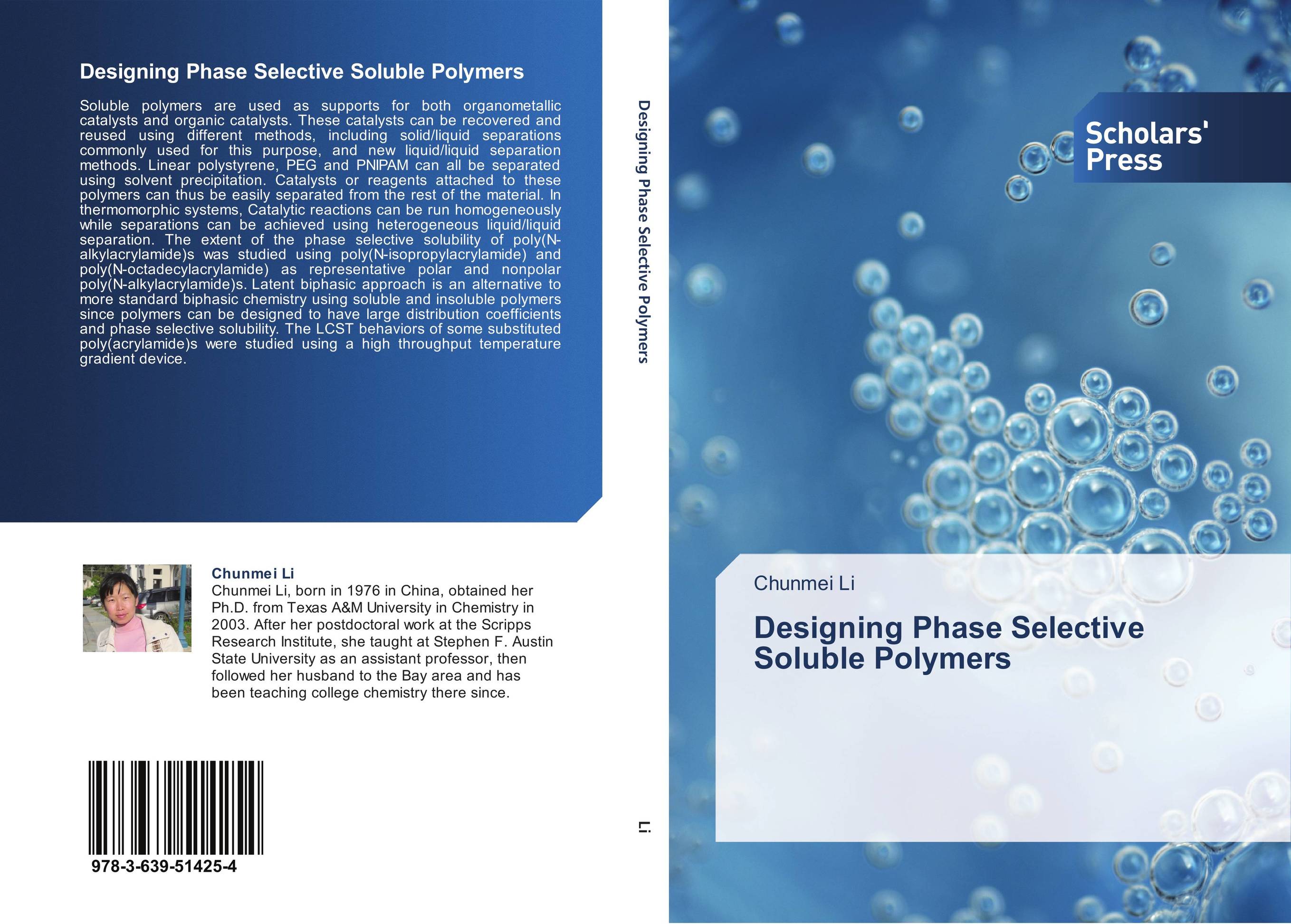| Поиск по каталогу |
|
(строгое соответствие)
|
- Профессиональная
- Научно-популярная
- Художественная
- Публицистика
- Детская
- Искусство
- Хобби, семья, дом
- Спорт
- Путеводители
- Блокноты, тетради, открытки
Designing Phase Selective Soluble Polymers.

В наличии
| Местонахождение: Алматы | Состояние экземпляра: новый |

Бумажная
версия
версия
Автор: Chunmei Li
ISBN: 9783639514254
Год издания: 2013
Формат книги: 60×90/16 (145×215 мм)
Количество страниц: 188
Издательство: Scholars' Press
Цена: 50665 тг
Положить в корзину
| Способы доставки в город Алматы * комплектация (срок до отгрузки) не более 2 рабочих дней |
| Самовывоз из города Алматы (пункты самовывоза партнёра CDEK) |
| Курьерская доставка CDEK из города Москва |
| Доставка Почтой России из города Москва |
Аннотация: Soluble polymers are used as supports for both organometallic catalysts and organic catalysts. These catalysts can be recovered and reused using different methods, including solid/liquid separations commonly used for this purpose, and new liquid/liquid separation methods. Linear polystyrene, PEG and PNIPAM can all be separated using solvent precipitation. Catalysts or reagents attached to these polymers can thus be easily separated from the rest of the material. In thermomorphic systems, Catalytic reactions can be run homogeneously while separations can be achieved using heterogeneous liquid/liquid separation. The extent of the phase selective solubility of poly(N-alkylacrylamide)s was studied using poly(N-isopropylacrylamide) and poly(N-octadecylacrylamide) as representative polar and nonpolar poly(N-alkylacrylamide)s. Latent biphasic approach is an alternative to more standard biphasic chemistry using soluble and insoluble polymers since polymers can be designed to have large distribution coefficients and phase selective solubility. The LCST behaviors of some substituted poly(acrylamide)s were studied using a high throughput temperature gradient device.
Ключевые слова: catalysis, Polymer, chemistry, Organic, solubility



